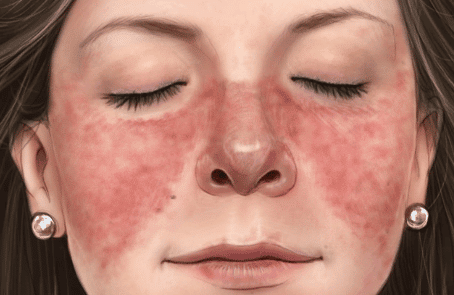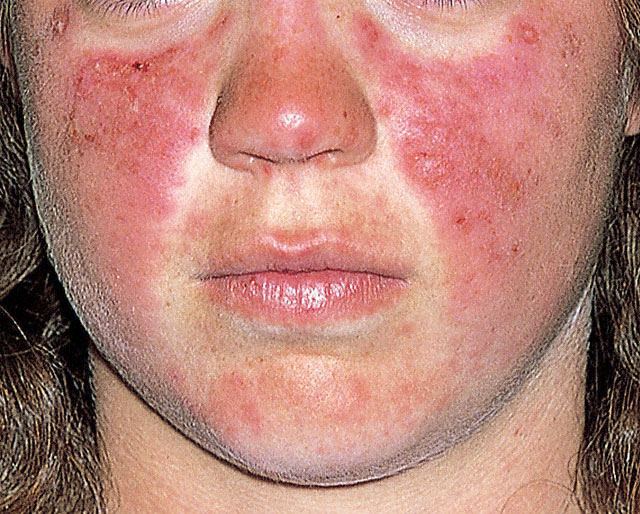Lupus erythematosus is a chronic autoimmune disease in which the body’s immune system mistakenly attacks its own healthy tissues and organs. This can cause widespread inflammation and damage in various parts of the body, including the skin, joints, kidneys, heart, lungs, blood cells, and brain. The most common form is systemic lupus erythematosus (SLE), which can affect multiple organs, while other forms—such as discoid lupus and drug-induced lupus—are more limited in scope.
Lupus symptoms vary widely between individuals and can range from mild to severe. Common signs include fatigue, joint pain, skin rashes (especially a butterfly-shaped rash across the cheeks and nose), fever, and sensitivity to sunlight. The exact cause of lupus is unknown, but it is believed to be triggered by a combination of genetic, hormonal, and environmental factors. Lupus is more common in women, particularly those of African, Asian, or Hispanic descent, and often appears between the ages of 15 and 45.
While there is no cure for lupus, it can be managed with medications that reduce inflammation and suppress the immune system, such as corticosteroids, antimalarials (like hydroxychloroquine), and immunosuppressants. With proper treatment and lifestyle adjustments, many people with lupus can lead active and relatively normal lives.

Causes of Lupus Erythematosus :
Lupus erythematosus is a chronic autoimmune disease caused by a combination of genetic, environmental, hormonal, and immune system factors. Individuals with a genetic predisposition are more likely to develop the disease, especially if they have a family history of autoimmune conditions. Environmental triggers such as ultraviolet (UV) light exposure, certain viral infections, and specific medications can initiate or worsen symptoms. Hormonal influences, particularly the presence of estrogen, help explain why lupus is significantly more common in women, especially during their reproductive years. The immune system in lupus patients becomes overactive and loses its ability to distinguish between foreign invaders and the body’s own cells, leading to the production of autoantibodies that attack healthy tissues. This immune dysfunction, along with triggers like stress and smoking, contributes to the development and progression of the disease.
1. Genetic Factors
- Family history: Lupus is more common in individuals with a family history of autoimmune diseases.
- Genetic predisposition: Certain genes (e.g., HLA-DR2, HLA-DR3) increase susceptibility.
2. Environmental Triggers
- Sunlight (UV exposure): Can trigger skin lesions or systemic flares.
- Infections: Certain viral infections (like Epstein-Barr virus) may trigger lupus in genetically predisposed individuals.
- Medications: Some drugs can induce lupus-like symptoms (called drug-induced lupus), including:
- Hydralazine
- Procainamide
- Isoniazid
- Quinidine
3. Hormonal Influences
- Estrogen: Higher prevalence in women (especially during reproductive years) suggests a hormonal component.
- Lupus is 9 times more common in women than men, particularly between ages 15–45.
4. Immune System Dysfunction
- Loss of immune tolerance, leading to the production of autoantibodies (e.g., ANA, anti-dsDNA) that attack the body’s own tissues.
- Defective clearance of apoptotic cells, which may expose autoantigens to the immune system.
5. Other Possible Triggers
- Smoking
- Stress (physical or emotional)
- Exposure to toxins or chemicals

Solutions :
While there is no permanent cure for lupus erythematosus, the condition can be managed effectively with a combination of medications, lifestyle changes, and regular medical care. The primary goal of treatment is to control symptoms, reduce inflammation, prevent flare-ups, and protect organs from damage. Medications commonly used include nonsteroidal anti-inflammatory drugs (NSAIDs) for pain and inflammation, corticosteroids to suppress the immune system, antimalarial drugs like hydroxychloroquine to control skin and joint symptoms, and immunosuppressive agents in more severe cases. In addition to medication, patients are advised to avoid direct sunlight, manage stress, quit smoking, maintain a healthy diet, and engage in regular, gentle physical activity. Regular monitoring by a healthcare provider is essential to adjust treatments based on disease activity. Early diagnosis and consistent management can help individuals with lupus lead a relatively normal and healthy life.
Medical Treatments:
- NSAIDs (e.g., ibuprofen, naproxen): Reduce pain and inflammation.
- Corticosteroids (e.g., prednisone): Control severe inflammation and suppress immune activity.
- Antimalarial drugs (e.g., hydroxychloroquine): Help manage skin and joint symptoms.
- Immunosuppressive drugs (e.g., azathioprine, methotrexate): Used in more severe cases to control the immune response.
- Biologic agents (e.g., belimumab): Target specific parts of the immune system.
Lifestyle and Self-care:
- Sun protection: Avoid direct sunlight; use sunscreen and protective clothing.
- Healthy diet: Eat a balanced diet rich in fruits, vegetables, and whole grains.
- Regular exercise: Light to moderate activity to improve strength and reduce fatigue.
- Stress management: Practice relaxation techniques such as yoga, meditation, or deep breathing.
- Quit smoking: Smoking can worsen symptoms and increase complications.
Regular Medical Monitoring:
- Frequent check-ups: Track disease activity and adjust treatment as needed.
- Lab tests: Monitor organ function and detect flares early.
Patient Education and Support:
- Education: Understand triggers and symptoms to manage flare-ups effectively.
- Support groups: Emotional support and shared experiences from others living with lupus.
